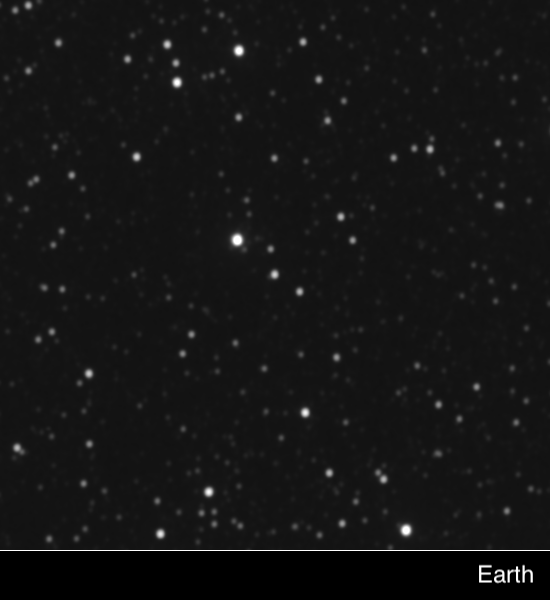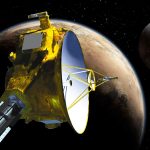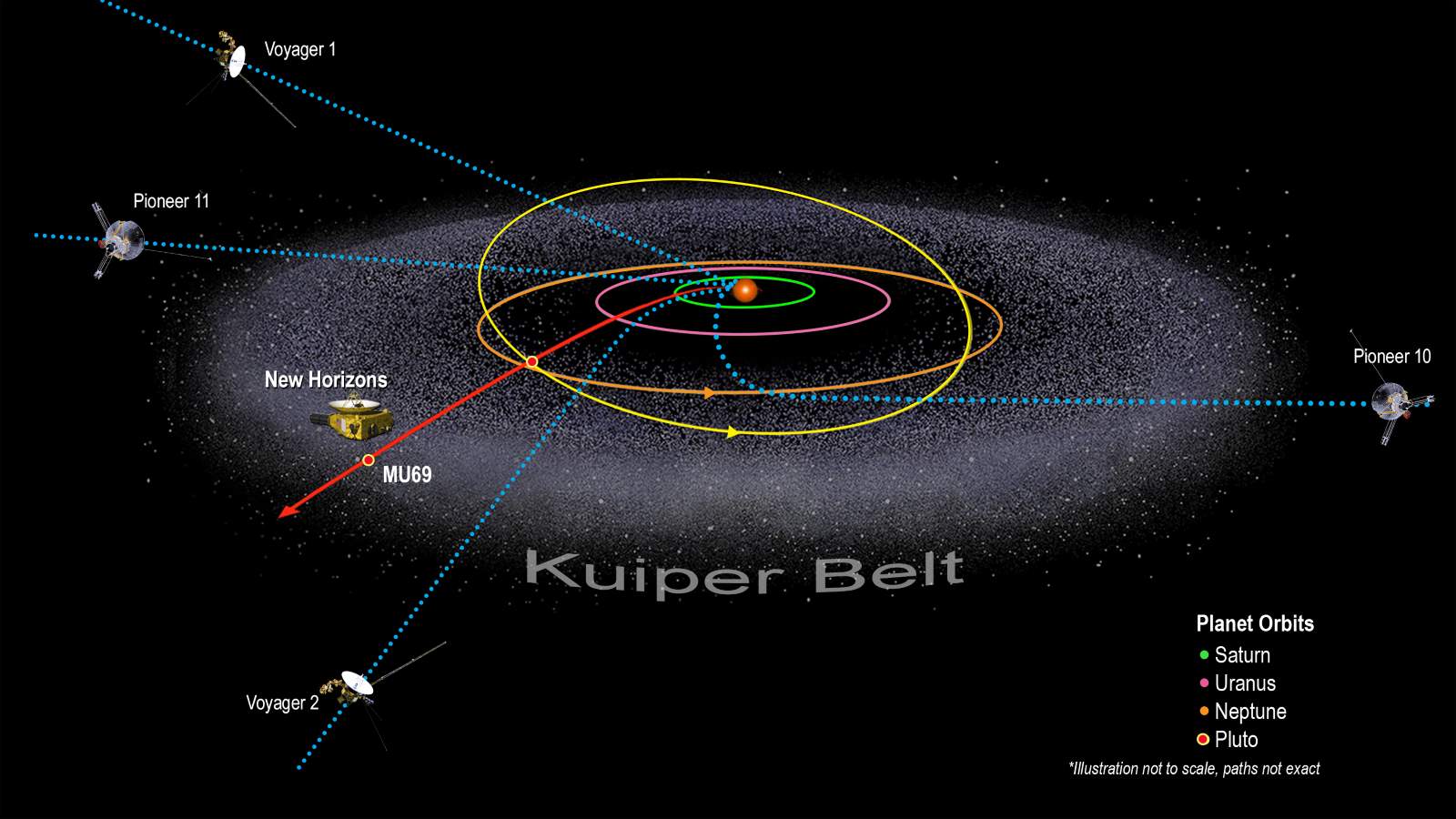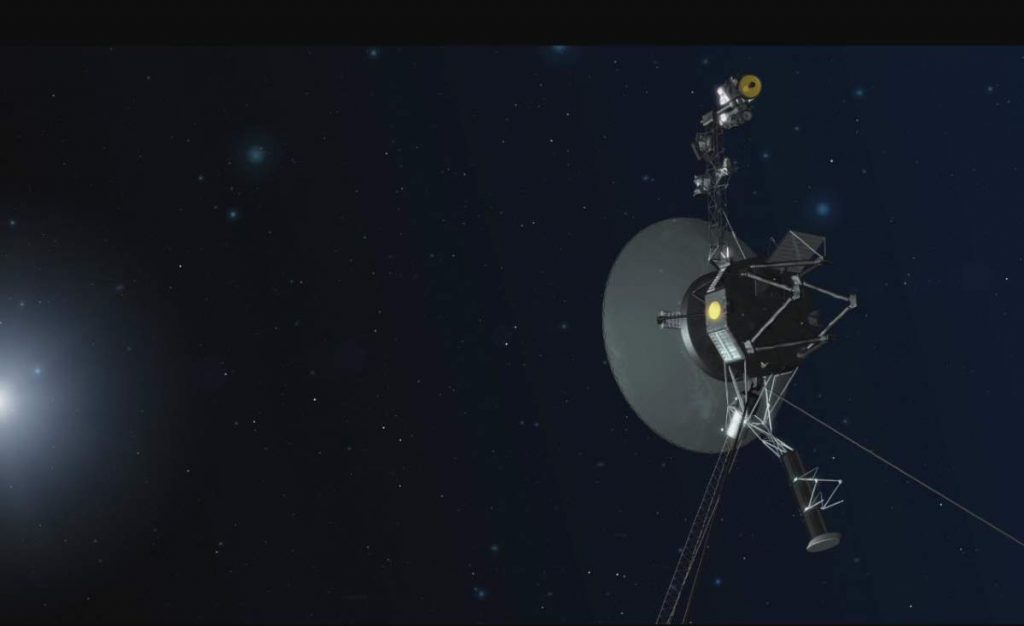NASA’s New Horizons space probe is currently the farthest human-made object that is still able to take photographs. It was launched on January 19, 2006. Now the spacecraft is so far from Earth that the photos taken by New Horizons show nearby stars from an unearthly perspective (see notes 1).
An unearthly parallax perspective
Yes, for the first time ever, a spacecraft has sent back pictures of the sky from so far away that the nearby stars appear to be in different positions than we’d see from Earth. New Horizons spacecraft just observed interstellar parallax from the outer reaches of the solar system.
On December 5, 2017, New Horizons broke the record for Voyager 1’s record for being farthest from Earth while capturing images. It is still taking photos and the images of the star Proxima Centauri captured by it show the star from a different perspective than the images captured by ground-based telescopes.
On April 22-23, 2020, the spacecraft turned its long-range telescopic camera to a pair of the closest stars, Proxima Centauri and Wolf 359, showing just how they appear in different places than we see from Earth. Scientists have long used this “parallax effect” – how a star appears to shift against its background when seen from different locations – to measure distances to stars: as Earth makes its way around the Sun, the stars shift their positions.
But, because even the nearest stars are hundreds of thousands of times farther away than the diameter of Earth’s orbit, the parallax shifts are tiny, and can only be measured with precise instrumentation – no human eye can detect these shifts.
When images taken by New Horizons are paired with images of the same stars taken on the same dates by ground-based telescopes on Earth, the parallax shift is instantly and clearly visible – even to the human eye. The combination yields a perfect 3D view of the stars “floating” in front of their background star fields.

New Horizons is not the farthest human-made object though – this title goes to Voyager 1. It was launched by NASA on September 5, 1977, and as of June 2020, Voyager 1 is more than 13,8 billion miles (22,2 billion km) or 148.64 AU from Earth. It stopped taking photos three decades ago.
After taking its last but most famous image, the “Solar System Family Portrait” or better known as “Pale Blue Dot” in 1990, the cameras of Voyager 1 were turned off to save power and memory for the instruments expected to detect the new charged particle environment of interstellar space. Mission managers removed the software from both Voyager 1 and Voyager 2 spacecraft that controls the cameras.
How long we’ll be able to communicate with the New Horizons spacecraft?

Despite we can communicate out to 200 AU (we’re currently near 47 AU), its power will run out before we get that far, somewhere near 100 AU. And there’s no way to get additional power. The spacecraft’s power is generated by a lump of decaying plutonium and once it decays away it’s gone.
Create your own New Horizons parallax perspectives
You can download images taken by the New Horizons spacecraft and create or own parallax perspectives. Learn more.

Notes
- As of June 14, 2020, the New Horizons was about 6.973 billion kilometers (4.332 billion miles) away from Earth. This is about 46.61 AU. At that distance, light takes 6 hours, 27 minutes, and 39.5936 seconds to travel from the spacecraft and arrive at us. On April 18, New Horizons spacecraft reached a new milestone: it crossed the 50 AU mark (AU stands for Astronomical unit, the distance between Earth and Sun, which is defined as exactly 149,597,870,700 meters in 2012, or about 150 million kilometers / 93 million miles).
Sources
- ‘Looking at an alien sky’: New Horizons probe sees shifted star positions (photos) on Space.com
- NASA’s New Horizons Conducts the First Interstellar Parallax Experiment on pluto.jhuapl.edu
- New Horizons on Wikipedia
- Voyager Mission – Frequently Asked Question on voyager.jpl.nasa.gov
- “NASA’s New Horizons Conducts the First Interstellar Parallax Experiment” on the NASA website
- Space Shuttle Endeavour’s Touchdown Meets Columbia’s Salute [An amazing photo from the past] - February 29, 2024
- Moon Landings: All-Time List [1966-2024] - February 23, 2024
- From Orbit to Ordinary: 10 Earthly Applications of Space Technology - January 23, 2024



